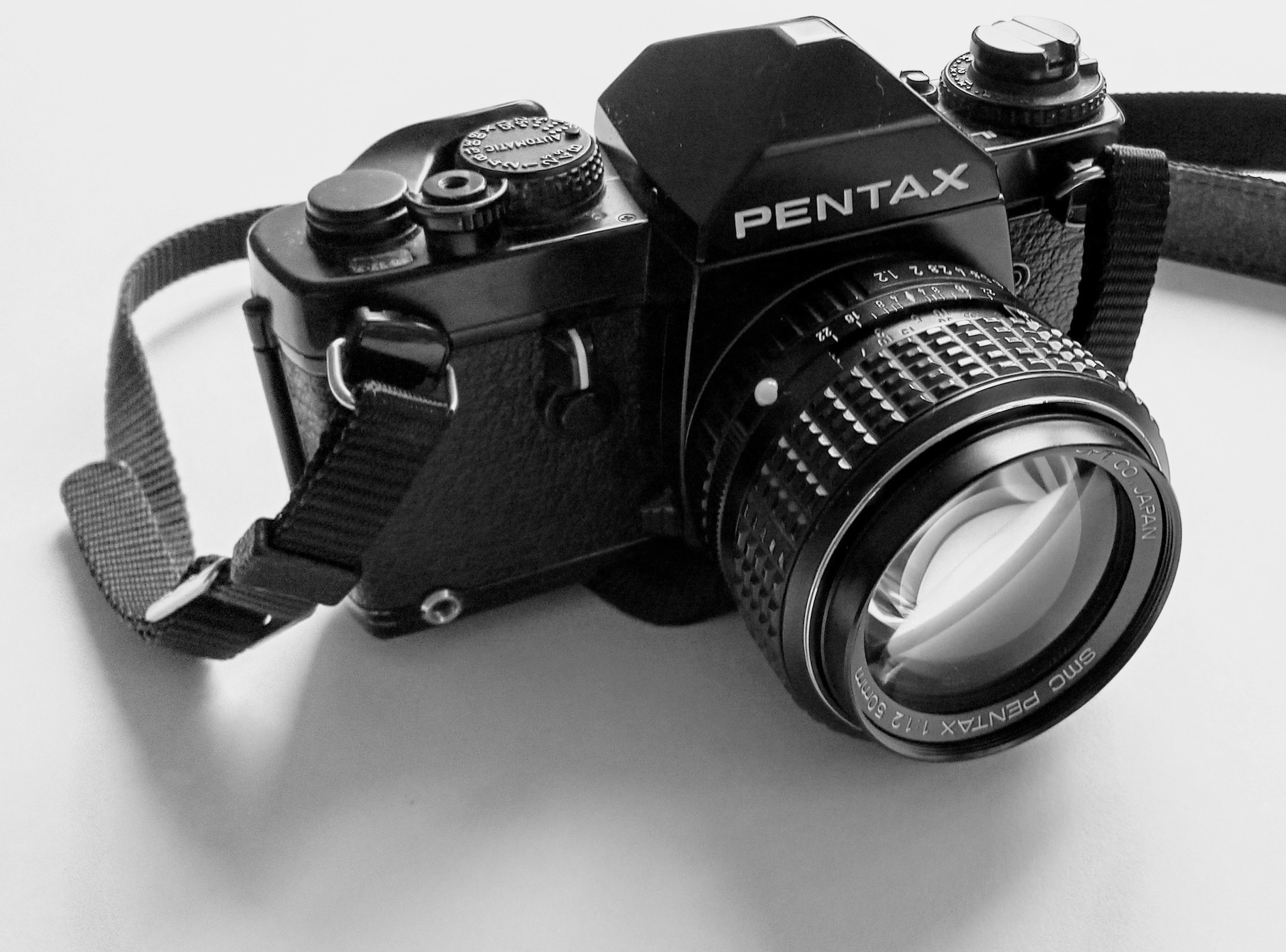The Pentax LX, produced between about 1980 and 2000, should be well known to every photographer, especially those who use a Pentax system. Without going into too many technical details of the camera, I will try to sketch a comprehensive picture of the camera in this review about the Pentax LX. After all, I have already taken some nice pictures and analog black and white photos with the Pentax LX.
Pentax LX Review: First impressions
I purchased my Pentax LX, which I am reviewing in this review, from a small photo store in the Netherlands called MK Optics. It came with a 3-month warranty, which of course is certainly enough to check the camera for the most important technical details. The essentials are, of course: are the shutter speeds (4 – 1/2000s, B) plausible, are the seals ok, are there any other signs of use or wear that could affect the proper functioning of the camera, like, to give an example, the cleanliness of the battery compartment? No corrosion, i.e. any rust, should be visible and present in the battery compartment! The so-called sticky-mirror problem occurs with all LX’s, but it’s still nothing bad: it simply means that a relatively small part of the camera has to be replaced. This usually solves the problem already! It also happens when the camera has not been used for a long time. So the same applies here: If you rest, you rust! So you should run the Pentax LX, very much like a good lady, frequently – which, by the way, is similar with the Pentax MX, for which I will also write a review.
Photography with a Pentax LX: Field report
We’ll start taking pictures using the Pentax LX in a minute! But since the camera is integrated in an extensive accessory system – there are motors, film magazines, interchangeable viewfinders and ground glass screens – the question arises what kind of equipment is included to my Pentax LX. My camera is equipped with the standard viewfinder FA-1 (later I bought the FF-1) and a SG-20 screen. The Pentax LX is nothing unusual for me, since I am also very comfortable taking pictures with the Pentax ME and Pentax MX. The Pentax LX is a tick bigger though, but not so much that I would be bothered by that. In fact, I rather like it because I no longer have the anxious feeling that I might accidentally press any switch, as I did with the Pentax MX. The photos taken with the Pentax LX are accurately exposed, whether in Av mode or shot completely manually. In combination with the SMC-Pentax 50mm f/1.2, the photos are sharp or pleasantly soft, depending on the aperture.
Cool features of the Pentax LX
The Pentax LX has a switch specifically designed for multiple exposures. This allows the film to be rewound with millimeter precision. This is convenient for anyone who wants to make double and multiple exposures with a Pentax camera. After all, the Pentax ME, MX, MG, MV or MV-1, all cameras that hardly differ from the LX in terms of design, are not really designed for double exposures.
The Pentax LX can be operated without batteries. Therefore the shutter speeds B, 1/60 – 1/2000 are mechanically controlled. One problem is that the built-in light meter does not work without batteries either. But if you know the sunny 16 rule, you know that even without a light meter you can take wonderful pictures.
Pentax LX Review: General thoughts
Would I buy the Pentax LX again? Yes. Is it worth the money? Yes, but make sure that the camera can be tested either on site or is covered by a warranty. Should I be afraid of the sticky mirror problem? Yes. Also your camera will suffer from it. But also no. It can be repaired easily and it should also occur primarily with cameras that have not been used for a long time. The fact that the newer Pentax LX, which has a collar but no nose at the shutter release, is not affected by this problem is fake, by the way. It happens sooner or later with all Pentax LX. Should one invest in the Pentax LX accessory system? That depends. The grid focus screen makes some things easier, a waist level viewfinder makes sure that you can more or less shoot without being noticed. All in all, the accessories are nice to have, but if you work without them, the photos wouldn’t necessarily be worse.
